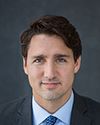Mr. Speaker, with regard to part (a), Environment Canada does not purchase ecologically sensitive lands directly under the national conservation plan. Rather, funding is provided to non-governmental organizations to purchase these lands with the intent to conserve important habitat for conservation purposes.
In relation to questions (a) to (c), given the wording used in the questions and the interest in information related to actions that were taken before the national conservation plan was announced, our response addresses the natural areas conservation program, rather than all programs under the national conservation plan.
Under the natural areas conservation program, in 2014-15, the amount spent by the Nature Conservancy of Canada, as of August 31, 2014, on purchasing ecologically sensitive, privately owned lands in Quebec is approximately $260,000. The total planned spending under the natural areas conservation program for 2014-15 in Quebec, including this $260,000, is $300,000.
Once the new natural areas conservation program agreement between Environment Canada and the Nature Conservancy of Canada is signed for the $100 million under the national conservation plan, a work plan for the remainder of 2014-15 will be submitted by the Nature Conservancy of Canada. This will include the planned spending in Quebec for the final months of this fiscal year.
The spending for 2015-16 and 2016-17 is not yet known.
With regard to part (b), in 2014-15, the amount spent, specifically on purchasing wetlands in Quebec is not easily determined at this time, as the Nature Conservancy of Canada does not automatically track wetlands and uplands work. Under the natural areas conservation program, Ducks Unlimited Canada has not spent and does not intend to spend any of its federal funds in Quebec in the 2014-15 fiscal year.
The spending for 2015-16 and 2016-17 is not yet known.
With regard to part (c), in 2014-15 in Quebec, ecologically sensitive lands, including wetlands have been acquired within the Nature Conservancy of Canada’s priority natural area of the Northern Green Mountains.
The spending for 2015-16 and 2016-17 is not yet known.
With regard to part (d), Environment Canada does not purchase ecologically sensitive lands directly. Funding is provided through a variety of programs, including those under the national conservation plan, to non-governmental organizations to purchase ecologically sensitive lands, including wetlands.
Regarding (d)(i), in the last three fiscal years, 2011-12 to 2013-14, Environment Canada’s partners have spent a total amount of $73,136,568 in government funds on purchasing ecologically sensitive, privately owned lands, including wetlands. This includes $68.9 million under the natural areas conservation program and $4.2 million under other programs.
Regarding (d)(ii), as part of the national conservation plan, $100 million was announced for the continuation of the natural areas conservation program, which is managed by the Nature Conservancy of Canada. Given that the natural areas conservation program is now within the national conservation plan for 2014-15, 2015-16 and 2016-17, it is not included here.
Planning for the next three years in various programs is currently under way.











